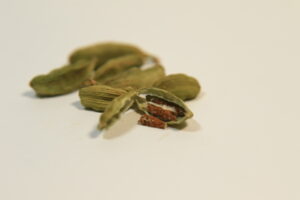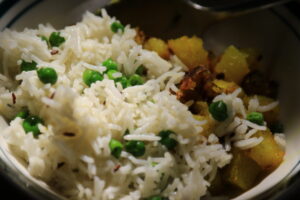Cardamom is a spice native to India, Bhutan, Nepal, and Indonesia, and has been used in these regions for centuries. It is the third most expensive spice in the world after saffron and vanilla. In this essay, I will discuss the history, flavor profile, uses, and list a few dishes which use cardamom.
History: Cardamom has been used for thousands of years in traditional Indian, Ayurvedic, and Chinese medicine. The ancient Egyptians used it in perfumes and incense, while the Greeks and Romans used it as a cooking spice. It was also traded along the ancient Spice Route, which connected Asia and Europe, making it one of the earliest-known spices to be traded. Today, cardamom is still an important spice in the cuisines of many countries and cultures.
Flavor profile: Cardamom has a unique flavor profile that is both sweet and savory. It has a warm, spicy, and slightly sweet taste with hints of citrus, mint, and camphor. The flavor is complex and adds a distinct aromatic note to any dish it is used in.
Uses: Cardamom is a versatile spice and can be used in both sweet and savory dishes. It is commonly used in Indian, Middle Eastern, and Scandinavian cuisine. In Indian cuisine, cardamom is used to flavor curries, rice dishes, and sweets. In Middle Eastern cuisine, it is used to flavor coffee and tea, as well as in meat dishes and stews. In Scandinavian cuisine, it is used to flavor pastries and baked goods.
Some of the most popular uses of cardamom include:
- Adding it to tea or coffee for a unique and flavorful twist
- Using it to flavor rice dishes, such as biryani or pilaf
- Adding it to curries and stews for a warm and aromatic flavor
- Using it to flavor desserts, such as cookies, cakes, and ice cream
- Adding it to spice blends, such as garam masala or ras el hanout
Dishes which use cardamom:
- Biryani: A classic Indian rice dish flavored with cardamom, cinnamon, cloves, and other spices, often served with vegetables, meat or seafood.
- Garam Masala: A popular Indian spice blend that includes cardamom, cinnamon, cloves, cumin, coriander, and other spices. It is used to flavor curries, stews, and other dishes.
- Chai Tea: A popular Indian tea made with black tea, milk, sugar, and cardamom, as well as other spices like cinnamon, ginger, and cloves.
- Cardamom Rolls: A Scandinavian pastry made with cardamom-infused dough and topped with sugar and cinnamon.
- Kheer: A classic Indian rice pudding flavored with cardamom, saffron, and other spices, often served as a dessert.






